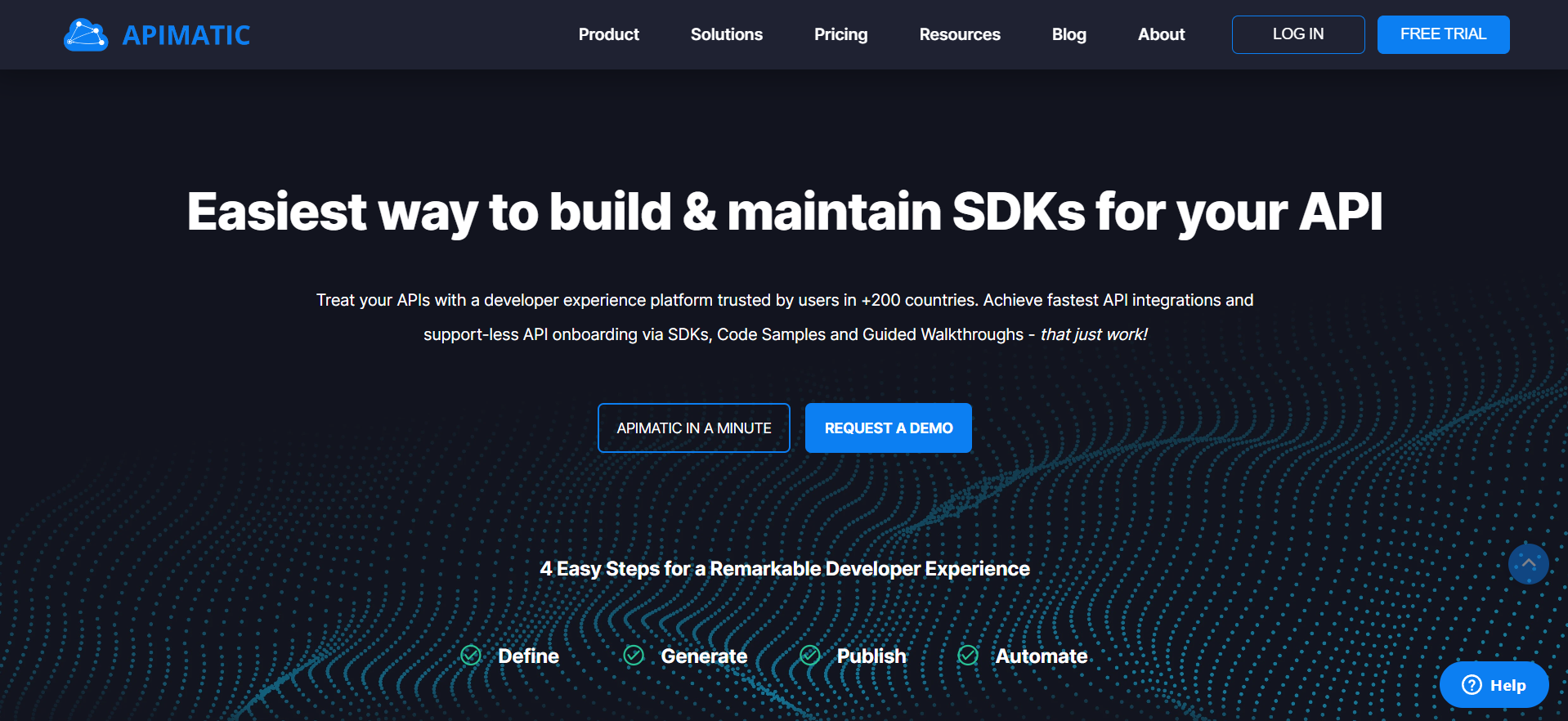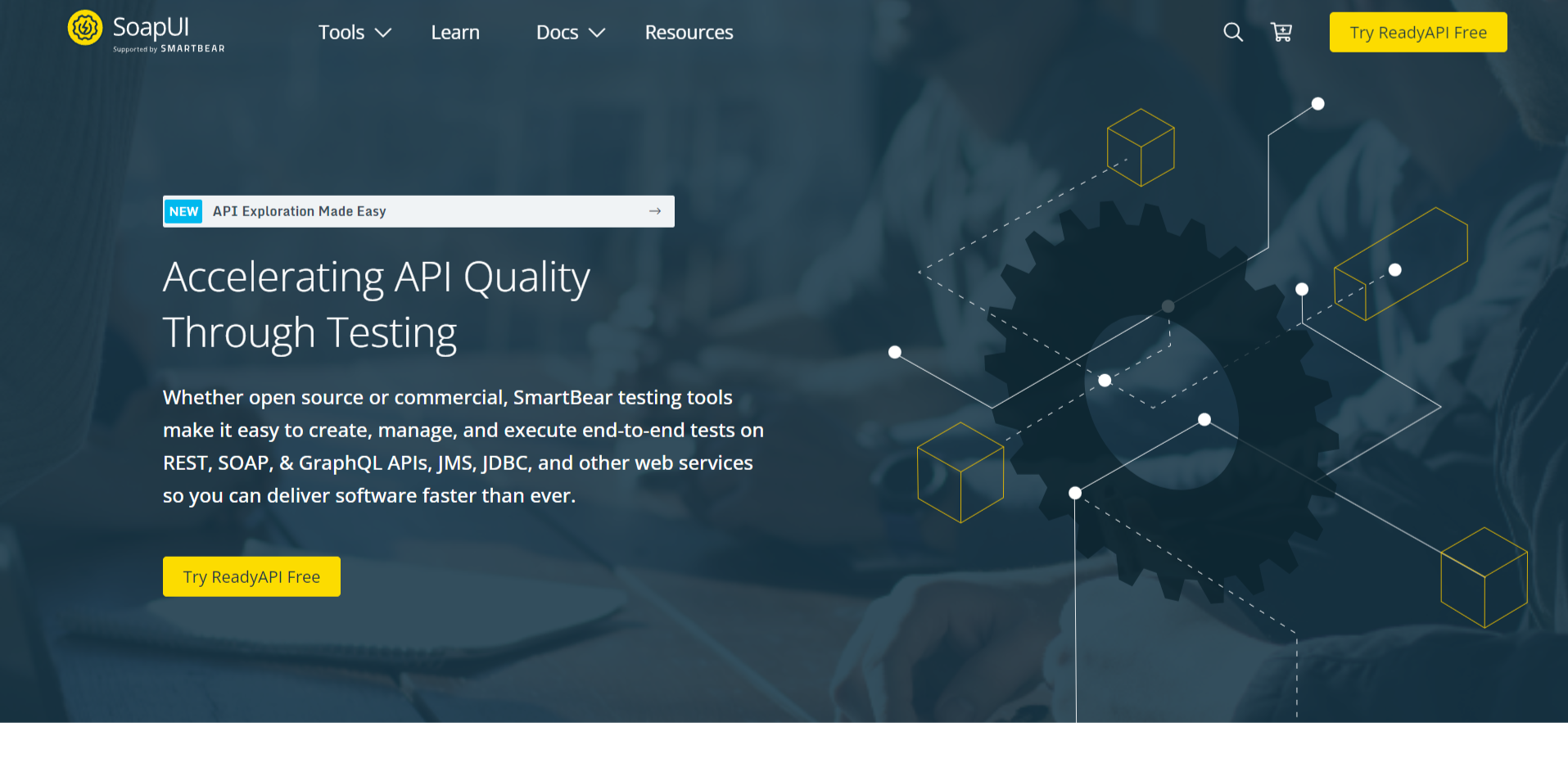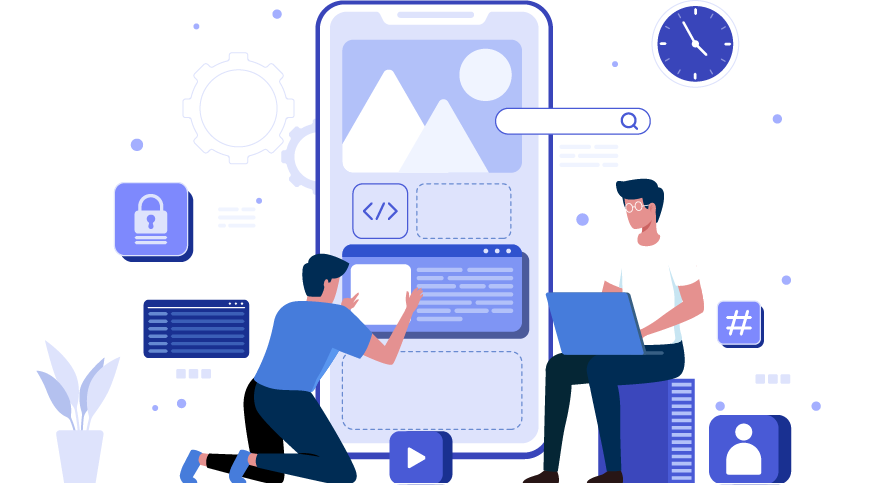TABLE OF CONTENT
Ever wondered about the invisible forces that make your mobile apps come alive? If you're immersed in the tech world or a geek, chances are that the term "API" has graced your ears countless times. Today, APIs wield an even greater influence on our economy and day-to-day activities.
Kicking things off, let's break down the acronym: API stands for Application Programming Interface. APIs are omnipresent, threading through our daily lives in various ways. Whether it's booking tickets, logging into Facebook, or conducting online transactions via mobile payment apps, APIs facilitate all these kinds of interactions.
In this guide, we'll learn about and try to understand all things that are API-related. Starting from the basics, progressing to API development, understanding how to utilize APIs, and ultimately grasping the mechanics of how APIs operate. Additionally, you can explore services related to API development, such as API implementation and API development services.
What is API and How does API work?
An API (Application Programming Interface) serves as a collection of instructions, specifications, and standards that enable a software application to leverage the features or services of another application, device, or platform in order to enhance its own services. From a technical standpoint, an API is a set of programming code that facilitates the exchange of data between different software products. It defines the rules and conditions governing this data interaction.
To illustrate the functioning of an API, consider the scenario where you're using a movie ticket booking app. You input details like movie preferences, showtimes, and location.
Upon submission, the app displays a list of available movies with showtimes, theater locations, prices, and other pertinent information. This seamless retrieval of data is made possible through APIs. For the app to provide such accurate movie data, it sends a request to the associated website's API. This request grants the app access to the website's database, from which it retrieves the relevant movie information. The website's API then furnishes this data back to the app.
In this context, the API functions as an intermediary that facilitates the smooth sharing of data between the app and the website. The movie ticket booking platform and the website act as the endpoints in this exchange. When it comes to communication between these endpoints, there are two main approaches: SOAP and REST.
Now that we understand the workings of APIs, let's learn the terminology used in API development.
Terminologies involved in API Development
API Key: An API key is a distinct code utilized within computer programs to verify the identity of a user, developer, or the program making the request.
Endpoint: An endpoint refers to the interaction points where a server connects with an API.
JSON: JSON (JavaScript Object Notation) is a data format employed by APIs to facilitate the exchange of data. This data interchange can transpire between a web application and a server, or between two distinct applications.
GET: GET is a technique utilized to solicit data from a server associated with a designated resource.
POST: POST is a procedure employed to transmit data to the API server with the intention of either generating a new resource or updating an existing one.
OAuth: OAuth is an open-standard authorization framework utilized for APIs. This framework ensures secure and controlled access to users' data by applications or third-party websites, without requiring direct access to the users' passwords.
Latency: Latency refers to the duration taken by an API to handle a request and provide a response.
Rate-Limiting: Rate-limiting involves the management of the rate at which incoming and outgoing traffic is handled. This practice encompasses controlling the number of requests a user can make to the API, regulating the flow of data.
API Throttling: API throttling involves the regulation of how consumers use APIs, limiting their usage over a defined period.
REST: REST, which stands for Representational State Transfer, is a type of programming architectural design aimed at improving the effectiveness of communication between two systems or devices. It is designed to be lightweight and revolves around the concept of providing specific data only upon request. This is achieved by sharing references to the data rather than transmitting the complete data copy.
SOAP: SOAP, which stands for Simple Object Access Protocol, serves as a messaging protocol used for exchanging structured information during the execution of web services across computer networks. It collaborates with XML data format and application layer protocols such as HTTP and SMTP to manage message formatting, negotiation, and transmission.
Tools for API Development
When it comes to creating APIs, there are several useful tools available for developers. Here are some of the most important and popular ones:
Apigee: Apigee is a tool created by Google for managing API development. It's particularly useful for companies modernizing their older apps, aiding data sharing among apps and services, and assisting developers in constructing interconnected applications.
Dredd: Dredd is an HTTP API testing framework used to confirm the accuracy of an API's description on the backend. It meticulously examines the API's description to ascertain its validity.
Sandbox: A sandbox provides a swift and simple way to create a simulated RESTful API based on API definitions. Additionally, it lowers the potential risks and expenses linked to testing third-party APIs.
APIMatic:

APIMatic is a platform designed to enhance the developer's interaction with website APIs. It's employed to maintain alignment with API modifications. Furthermore, this tool empowers developers to convert API descriptions into various formats like WADL, Swagger, RAML, OAI format, IO Docs, API Blueprint, HAR 1.4, Postman Collections, and more.
Postman: Postman facilitates app developers in assessing API performance through documentation and testing. It also serves as an interactive tool that can be configured for automation purposes.
SoapUI:

SoapUI is a free testing tool that functions across different platforms. Additionally, it has the capability to automate both functional and non-functional tests. It's employed for conducting a range of tests including regression, compliance, execution, security, and load tests on Web APIs.
JMeter: JMeter is open-source software utilized for performing performance tests on RESTful APIs.
Swagger:

Swagger is an open-source framework employed in API development. Prominent technology companies like GettyImages, Apigee, PayPal, and Microsoft utilize Swagger for their API projects.
Essential Features of API Development
Before you get into the process of designing and developing APIs, there are a few essential features to keep in mind. These features will act as a backbone and catalyst in your API development process.
Authorization and Authentication via OAuth: Authentication involves confirming the correct identity, while Authorization determines whether an authenticated user has permission to perform an action on a specific resource. OAuth, OAuth2, and JWT are widely used standards for handling authorization and authentication.
Paging: Paging involves deciding how much data to show and how often it should be displayed. Sorting arranges data based on specific criteria, conditions, and changes. These elements aid in reducing processing time, ensuring strong security, and achieving quick response times.
Cache and Sorting: Creating a cache strategy speeds up data retrieval. Storing data in memory reduces costs. Tools like Redis and Memcached help with caching. APIs should allow data sorting by modification time or other criteria to deliver pages sequentially to users.
HATEOAS: HATEOAS, short for Hypermedia as the Engine of Application State, is a component of the REST application design. In this approach, content containing links to various types of media like text, images, videos, etc., is termed hypermedia. HATEOAS empowers clients to interact with a REST API using dynamically provided server responses.
Error handling and Validation: Error handling is crucial for identifying issues in the server or client side, making debugging easier. It differentiates between problems that can be resolved by the client and those that require support. Implementing well-defined error codes and descriptions enhances this process. On the other hand, validation in APIs verifies data accuracy. It can be split into client-side validation, which provides prompt feedback like highlighting mistakes, and server-side validation, which ensures property types and requirements are met, such as email or account numbers.
Testing: API testing closely resembles software testing. It involves both direct API testing and a part of integration testing to determine if it meets expectations for performance, functionality, security, and reliability. JMeter, Postman, and SoapUI are among the widely used tools for API testing.
Best Practices for API Development
We have covered the essential API features and the popular tools for building mobile or web app APIs. Yet, all of this effort can be wasted without the right API building methods. Many practices contribute to API development. Let's explore the finest practices for achieving perfect API development.
Utilize Throttling: App throttling is a smart approach to handle excess traffic, protect against DoS(Denial of Service) attacks, and have backup APIs in place. It's a best practice to manage traffic overflow, defend against DoS threats, and ensure backup APIs are ready.
API Gateway as Guardian and Enforcer: When configuring throttling rules and implementing API keys or OAuth, view the API gateway as the enforcement checkpoint. Imagine it as a guard that permits only authorized users to access data. It should enable message encryption, sensitive data manipulation, and allow you to monitor and control API usage.
Permit overriding HTTP Method: Certain proxies exclusively accommodate POST and GET methods. Hence, it's important to enable your RESTful API to supersede the HTTP method. Achieve this by utilizing the custom X-HTTP-Method-Override HTTP header.
Ensure and Prioritize Security: Balancing security and user-friendliness is vital for your API technology. If users spend over 5 minutes on authentication, your API might lack user-friendliness. Implement token-based authentication to enhance security without sacrificing usability.
Documentation: Lastly, creating detailed documentation for a mobile app API is valuable. It helps other app developers understand the process and improve user experience. Good API documentation speeds up projects, cuts costs, and boosts API efficiency.
Conclusion
The role of APIs has expanded significantly, impacting both software development and business partnerships. APIs are recognized for elevating business profits by establishing crucial technological links. You also have the option to create and integrate the required APIs for your business needs.
Speaking of APIs, consider W2S Solutions, a reputable mobile app development company that understands the potential of APIs to foster seamless technology integration and productive business collaborations. W2S Solutions also specialize in crafting effective solutions that harness the power of APIs to drive growth and success.




